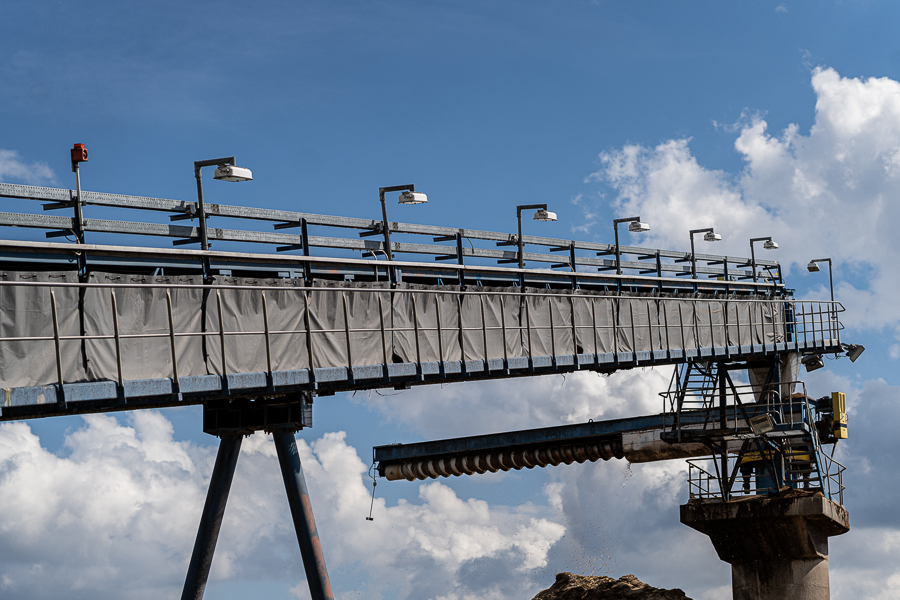Conveyor belt fire safety classifications and standards
Choosing the correct standard of fire-resistant conveyor belt – EN 12882
The following guide is intended to clarify classifications and standards relating to conveyor belts that are for general purpose use.
Unlike conveyors operating below ground, establishing the correct level or standard of fire resistance needed for conveyors operating in the open air is relatively straightforward. EN 12882 is the standard for safety requirements for conveyor belts for general-purpose use. The most basic safety requirement is EN 12882 Category 1, which simply demands that the belt is anti-static and conforms to EN ISO 284 international standards, which is also the primary demand for use in specific ATEX 95 (94/9/EC Directive) classified zones. This is especially important in environments where potentially combustible materials are involved such as coal, grain and biomass for example, it is essential that the conveyor belt cannot create static electricity that could ignite the atmosphere. Belts need to allow static electricity to pass through the metal frame of the conveyor structure down to earth rather than allow the static to build up.
For the vast majority of applications, EN 12882 Class 2A) or Class 2B levels of fire resistance are perfectly adequate. These standards make the distinction between fire resistance with covers, which is Class 2A (‘K’ grade) and fire resistance with or without covers, which is Class 2B (‘S’ grade). The relevance of “with or without covers” is that surface wear gradually reduces the amount of fire-resistant rubber that protects the internal flammable carcass. In both Class 2A and Class 2B grades, the rubber skim that bonds the fabric layers of the carcass together should also be fire resistant. In the case of EN 12882 Class 2B (fire resistant without covers), the rubber skim may be thicker than the skim used for EN 12882 Class 2A grade.
The best way to decide between Class 2A and Class 2B is to consider the material being carried. For moderately abrasive materials, such as grain for example, then Class 2A is usually perfectly adequate. However, if the material is abrasive and tends to wear the top cover quite rapidly then the safest option is to choose Class 2B.
Fire resistant Classes 3A and 3B are identical to 2A and 2B but have a drum friction test added. They are appropriate when blocked/seized drums and drive pulleys are a potential hazard and there is no safety system in place to detect belt slippage or identify that rotation has stopped. Class 4A is usually the best choice for conveyors operating above ground in closed or covered conditions and involves a more severe fire test (EN12881-1 method A, C or D).
Class 4B includes a drum friction test (Method B1) on top of the 4A requirements whereas Class 5A has an intensified drum friction test (Method B2). The demands of the B2 drum friction testing escalate through Classes 5B and 5C. Fortunately, thanks to improved technology, drum rotation detection sensors that are designed to automatically stop the conveyor if a potential problem is identified are now commonplace and easy to fit. These systems are usually referred to as ‘secondary safety devices’. Generally speaking, for above-ground use, drum rotation detection sensors effectively eliminate the need for compliance with Class 3A/B, 4B and 5A/B/C drum friction test standards.
Class 4A is usually the best choice for conveyors operating in closed or covered conditionsClass 4A is usually the best choice for conveyors operating in closed or covered conditions

